by Kenan White | Sep 28, 2012 | Basics, Gardening, Growing, Herbs, Life on the Farm, Seeds |
There is nothing easy about growing white sage; beginning with its seeds. White sage seeds are tested to a germination rate of twenty percent. Seed with this low of a germination rate are considered too old to use! Being a desert plant, white sage seeds will germinate in a few weeks or 80% will wait for six months to a year, maybe many years. This adaptation insures some white sage seeds will be ready for the next rain, even if ten years away!
This survival strategy is great for the desert, but makes germination uncertain in a greenhouse. Our cell trays are not a help, because we end up with dead cells or ones with too many seedlings. To insure a strong crop of white sage for the spring 2013 season, we resorted to an old fashion method of sowing seed. This means each and every seedling must be carefully transplanted to a cell. Being a species plant, there is wide variation in seedling size.
We carefully plant like sizes together. Watering is always the issue with white sage, well drained potting soil or garden soil with sand added are necessary. Wet soil can cause root rot quickly, never let white sage stay in wet soil!
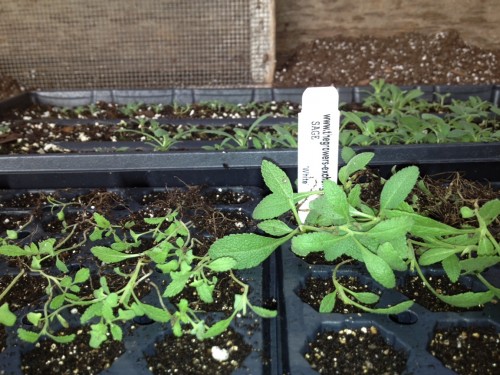
by Kenan White | Sep 19, 2012 | Basics, Gardening, Growing, Herbs, Life on the Farm, Seeds |
Growing herb plants presents many challenges. Almost all are species plants and have their own requirements for germination, growth, and peaceful establishment in someone’s garden. When The Growers Exchange decided to grow only herb plants, we quickly found ourselves pretty much all alone in our commercial greenhouse community. When growing more common plants, we could always call around and find extra plants when needed.
Not so with many herb plants! Finding fresh seed for basil, cilantro, parsley, and all the popular culinary herbs is easy. But if we run out of plants, our neighboring greenhouses will be full with geraniums and other flowering plants. If we run out, then we are out! But this inconvenience is small compared to consistently finding seeds for the less known herbs such as White Sage and Holy Basil. Only a few seed companies sell rare herb seeds. Once certain seeds have been located, they must also be viable. Meaning they must be fresh enough to germinate.
Finding fresh seed for rare herbs is always chancy, and we watch closely to see that we can try again if a batch fails to germinate. To even the odds that we sow fresh viable seed, we have grown our own herb plants in a garden next to the farm office. Seeds are harvested and dried in an old smokehouse. We still must buy seeds, but we also have the seeds we grew, which are very fresh. This doesn’t solve all the problems, but helps plenty and gives us a proactive way to keep a fresh supply of seeds.
by Kenan White | May 21, 2012 | Books & Design, Flowers, Gardening, Herbs, Life on the Farm, Miscellaneous, Wildlife |
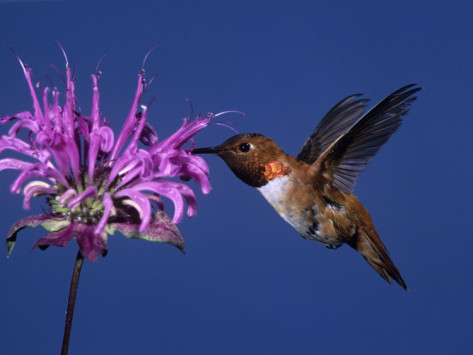
Hummingbirds love sweet,tubular-shaped flowers like those of the Bee Balm herb plant.
We absolutely LOVE watching hummingbirds dart through our gardens on a warm Summer evening. Attracting hummingbirds to your garden is a wonderful way to enjoy seeing these fast-flying little birds’ aerial antics up close, and will provide you with hours of entertainment from Spring until Fall. Also a very beneficial garden companion, hummingbirds will eat bugs and help increase pollination in your garden be flitting from bloom to bloom.
Hummingbirds do not have a sense of smell, and are instead attracted to brightly colored (usually red), trumpet or tube shaped flowers which their long beaks are specially designed to drink from. Because hummingbirds fly so fast (up to 30 miles per hour!), they spend most of their time foraging to keep their energy levels high. Their need for fuel is so high that hummingbirds may drink up to eight times their body weight in nectar in a day!
Make sure to plant these hummingbird friendly herbs and flowers to make your garden a great place for hummingbirds to feed:
We also have a variety of hanging and staked feeders that are specially designed to attract hummingbirds. Made from recycled glass, the colors change from a lovely orange and yellow color to a vibrant flame red that hummingbirds are drawn to. Click here to view our video and watch the hummingbirds swarm these lovely, hand crafted feeders.
Other tips for creating a hummingbird haven in your yard:
- Place hummingbird feeders near your garden to attract hummingbirds to your plants.
- Place the feeders at different heights throughout your yard and garden, as some species prefer different feeding patterns. Placing feeders in different parts of your yard will help keep territorial males from dominating all of the nectar.
- Make sure to keep your feeders clean and full of fresh nectar to ensure that the hummingbirds don’t get sick. Cleaning the sugary substance from the feeder’s holes may also help prevent attracting bees or wasps, as they may convene to find leftovers.
- Make sure to offer a good, clean water source for the hummingbirds to drink and bathe in, such as a bird bath which is shallow enough for them to play in.
- Add strings that run the length of your garden, above your plants to give hummers something to perch and rest on while flitting from flower to flower.
by Kenan White | May 10, 2012 | Herbs, Inspiration |
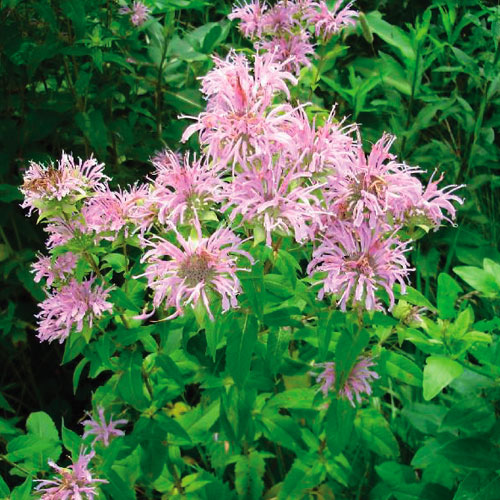
Just announced this week by The Herb Society of America, the 2013 Notable Native Herb is Monarda fistulosa, or commonly known as Wild Bergamot or Bee Balm. The information debuted at their annual educational conference held this year in Austin Texas, and we are honored to have been selected to be the exclusive grower and distributor for this program! Katrinka Morgan, Executive Director of the Herb Society of America, chose use because we are long term members, are dedicated to conserving natural resources and encouraging native plants, and said “This historic American farm is the perfect partner to help us bring attention to the vast selection of native herbs found in North America.”
The honor of Notable Native is bestowed on native herb plants that are found growing wild throughout the U.S. and who thrive in most any garden in every planting zone. Morgan goes on to mention that, they consider the plants versatility and usefulness as a culinary, medicinal and companion plant, as well as additional benefits like its aroma, usefulness in attracting pollinators, and longevity in the garden.
“Bee balm is used mostly today to attract butterflies and hummingbirds to the garden, but its uses are far greater. We selected it for its culinary, medicinal and aromatic values, as well as its usefulness as a companion plant,” Morgan explains. “It also performs well in most gardens throughout the US.”
We are overjoyed to be a member and partner to the HSA and hope you will visit their site to learn more, donate or become a member, too! You can visit the “Try This” section of our Bee Balm page to read more about the HSA and visit their site!
by Kenan White | May 3, 2012 | Books & Design, Containers, Exploring, Gardening, Growing, Herbs, Inspiration, Life on the Farm, Miscellaneous, Recipes |
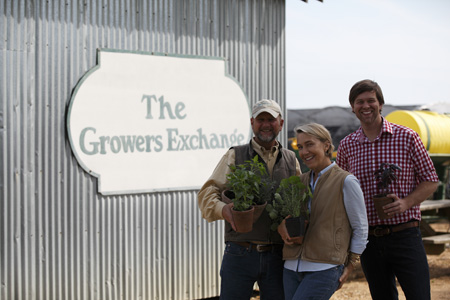
We had a great time showing James all around the farm- we even sent him home with some potted herb souvenirs!
Last week, our good friend, James Farmer came up for a demonstration on garden to table living and while here, he stayed in the cottage on our farm. We had a wonderful time strolling through the test gardens, talking about his favorite culinary herbs for his infamous Southern recipes, and chatting about country life, gardening and everything in between!
In the greenhouse, James discovered the benefits of Holy Basil and even helped us pot his very own herb garden kit, the James Farmer’s Favorites Herb Collection, where he includes his favorite culinary herbs for making his delicious drinks and dishes.
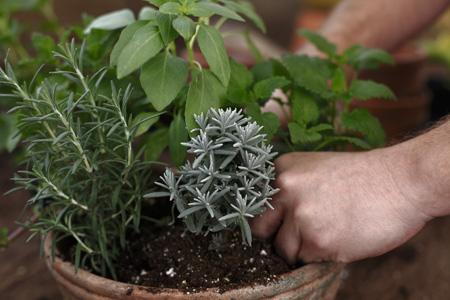
Our newest herb kit, the James Farmer's Favorites Herb Collection was hand picked by James himself!
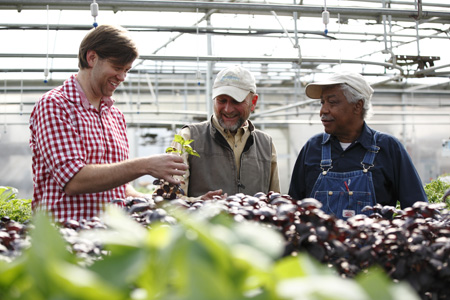
We introduced James to Holy Basil and taught him about its rich history and wonderful medicinal benefits.
When walking through the test gardens, we discussed the investment and versatility that perennial herbs lend. For example, I showed James that more than just a beautiful flower for the garden or in arrangements, Pyrethrum is a natural insect repellent and is used in many organic insecticides.
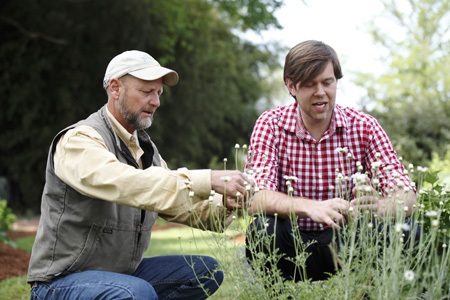
"Pyrethrum is beautiful in the garden or in arrangements, and is also a natural insect repellent used in many organic insecticides."
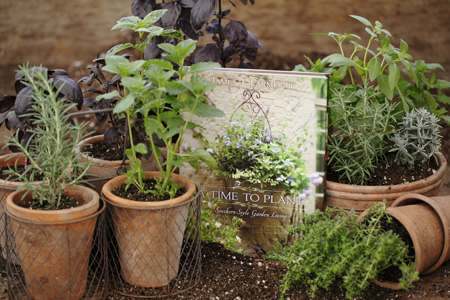
You can purchase James’s book, A Time To Plant: Southern-Style Garden Living and get loads of design tips, recipes and more, AND six of his favorite culinary herbs to create endless concoctions and dishes when you buy the James Farmer’s Favorites Herb Collection and Book!

We had such a wonderful time with James on the farm, we can't wait until he comes for another visit!
We had a such a fantastic time with James and can’t wait for him to come back! For more information on James, or his newest release, Sip and Savor: Drinks For Party and Porch, please visit his website!
by Kenan White | Apr 25, 2012 | Basics, Books & Design, Flowers, Gardening, Herbs, Inspiration, Life on the Farm, Miscellaneous, Recipes |
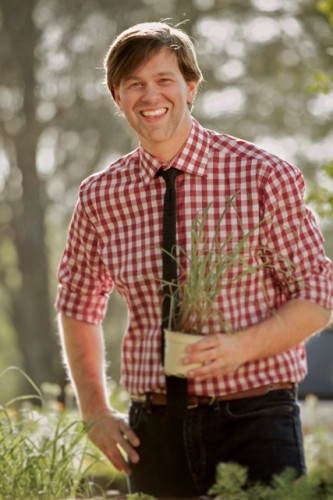
We are so excited that our good friend, James Farmer is coming to visit and stay at our farm this week! As part of Virginia’s Historic Garden Week, James is coming to visit and give us an exclusive demonstration on his garden to table arrangements as well as share some of his favorite food and drink recipes from his two books, A Time To Plant: Southern-Style Garden Living, and Sip and Savor, Drinks For Party and Porch, which was just released. James has a wonderful eye for design and has used his talents to bring gardening to a gourmet level. Throughout his elaborate table settings, stunning arrangements and in his Southern-chic food and drink recipes, James incorporates his passion for herb gardening for a refined but “down home” feel. As the most creative new personality in the garden living world, James still stays true to his Southern roots, drawing his inspiration from his family farm in Kathleen, Georgia.
![Time-Plant-Cover-02[1]](https://theherbexchange.com/content/uploads/2012/04/Time-Plant-Cover-021-388x500.jpg)
James Farmers Favorites
To celebrate James’s visit to our farm and his fantastic new book, A Time To Plant, Southern Style Garden Living, we’ve created the James Farmer’s Favorites Herb Collection to offer some of his favorite herb plants! We’ve included Lavender ‘Hidcote’, for its beauty in arrangements or as a garnish, and for its wonderful fragrance and light, floral flavor in drinks and recipes. For a true Southern experience, we added ‘Kentucky Colonel’ Mint, a robust spearmint that grows effortlessly and is the key component to a real Southern tradition, the Mint Julep. ‘Lemon Sweet Dani’ Basil was chosen for its delicate citrus tones and lovely blooming spires, making it perfect for flavoring seafood, salads and garnishing summer desserts. To share a savory note, we also added our Rosemary ‘Arp’, a flavorful, cold hardy, Rosemary that seasons meats, stews and full flavored desserts. (James loves using the Rosemary twigs as skewers for adding fruit kebabs to his delectable drinks!) Rounding out his favorites, are ‘Italian Flat Leaf’ Parsley for its full body flavor and lovely leafy foliage, and ‘English’ Thyme, a classic culinary herb that grew in his grandmother’s kitchen garden and of which he has fond, flavorful memories.
We have even included the option to buy either this collection of six culinary herb plants to get your garden started with Southern style, or the James Farmer’s Favorites Herb Collection AND James’s new book, A Time To Plant, Southern-Style Garden Living, for a lovely added gift.
If you may already have these wonderful culinary herbs in your garden, you can purchase A Time To Plant: Southern-Style Garden Living sold separately. Whether you treat yourself or give this as a thoughtful gift, the James Farmer’s Favorites will be a sure delight for entertaining in the garden and in your home!


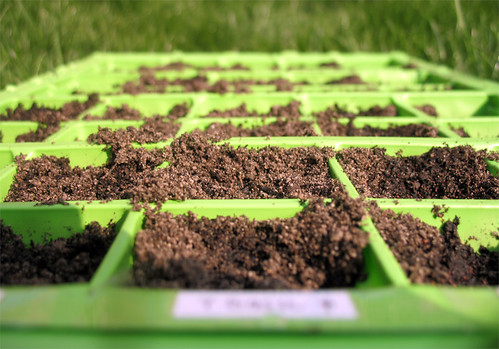









![Time-Plant-Cover-02[1]](https://theherbexchange.com/content/uploads/2012/04/Time-Plant-Cover-021-388x500.jpg)